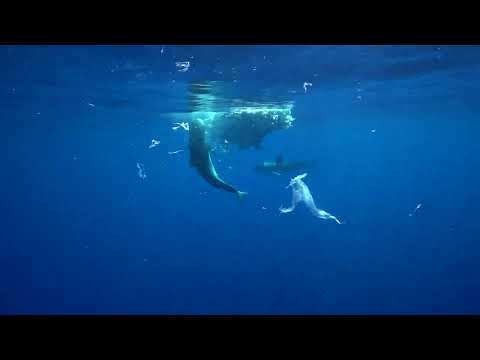Of the over 500 known shark species, many of these giant fish are hunters and not scavengers–particularly those found in the open ocean. White sharks (Carcharodon carcharias) ambush their prey from below and even sharks closer to shore like reef sharks are known to chase their prey into smaller crevices before eating them. Yet a small portion of the diets of most sharks still comes from picking apart already dead animals. Sometimes, these usually solitary hunters will even scavenge in groups.
In a study published May 29 in the journal Frontiers in Fish Science, a team from the University of Hawaiʻi at Mānoa describe an unusual aggregation of sharks coming together to feed on a decaying carcass of an unidentified animal.
“To our knowledge, this is the first study to document a feeding aggregation of tiger sharks and oceanic whitetip sharks scavenging concurrently, and peacefully, on a carcass,” study co-author Molly Scott said in a statement. “These species are rarely seen together in the wild because of the vastly different habitats they occupy.”

At least nine oceanic whitetip sharks and five tiger sharks were spotted feeding on the carcass. CREDIT: Kayleigh Grant.
Unusual group feeding
Oceanic whitetips (Carcharhinus longimanus) are a highly migratory and threatened species of shark. They grow to an average of 6.5 feet long, spend most of their time roaming the oceans alone. Their preferred habitat in the open ocean make them difficult for biologists to study, but they do aggregate near Hawai’i’s Big Island during the spring and summer months.
Tiger sharks (Galeocerdo cuvier) are slightly bigger at about 10 to 13 feet long. They are also more coastal and like true locals, live in the waters around the Big Island all year…
Read the full article here
